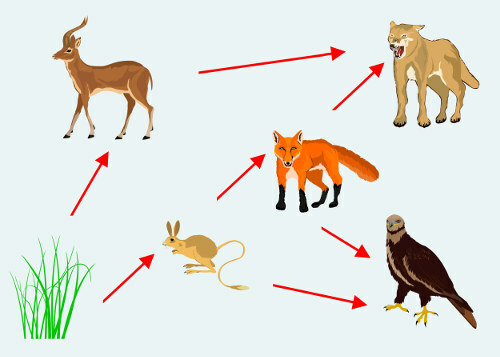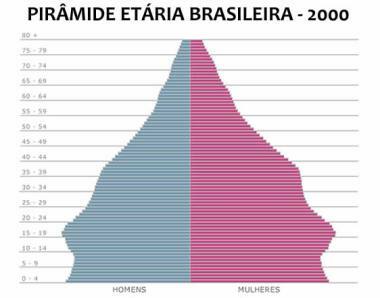In any ecosystem we find living organisms that establish feeding relationships between them. A plant photosynthesizing, a caterpillar eating a plant, and a bird eating a caterpillar are all examples of feeding relationships that exist between living things. These relationships are studied by analyzing the chains and food webs.
→ food chains
At food chains they are the feeding relationships that exist between the living beings in an ecosystem. Through the analysis of the food chain, it is possible to observe how nutrients and energy flow between the living beings that live in that region. Unlike a food web, the chain features a unidirectional flow. See an example:
Plant → Butterfly → Toad → Serpent
The arrows in the example above represent the direction of energy flow and can be read as “food for”. Thus, the plant serves as food for the butterfly, which serves as food for the frog, which serves as food for the snake.
Mind Map: Food Chain and Web

* To download the mind map in PDF, Click here!
Both food chains and webs have different trophic levels. Are they:
Producers: they are the first trophic level to be analyzed in a food chain and also in a web. They are able to produce their food, not needing to ingest other living beings. The processes used by these living beings, which are called autotrophic, for the production of food is the photosynthesis and chemosynthesis. We can cite as examples of producers plants, algae and some species of bacteria.
Consumers: organisms that are unable to produce their own food, being, therefore, heterotrophic. Consumers have different classifications: those who feed on producers are called c.primary consumers; those who feed on primary consumers are called secondary; those who feed on the secondary are called tertiary and so on. At each level, energy and matter are lost, so food chains generally have few trophic levels.
Decomposers: like consumers, decomposers are heterotrophic, as they do not produce their own food. These organisms, usually represented by fungi and bacteria, carry out the decomposition – process responsible for returning nutrients to the environment so that they can be used by other living beings.
→ food web

The food web is formed by several interconnected food chains
THE food web better represents the feeding relationships that exist in an ecosystem. It can be defined in a simplified way as the various food chains in an ecosystem. Therefore, the web does not have a unidirectional flow, like the food chain, as it shows that the same organism can have different eating habits and, consequently, occupy different levels. trophic
By Ma. Vanessa dos Santos
Source: Brazil School - https://brasilescola.uol.com.br/biologia/cadeia-teia-alimentar.htm



